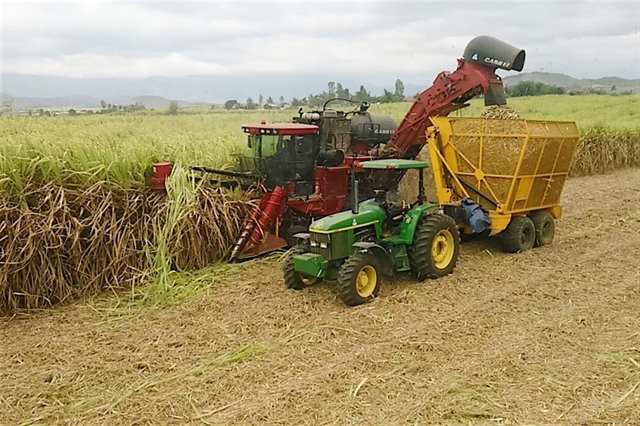
HÀ NỘI — Việt Nam has lost over 120,000 hectares of sugarcane in the 2016-21 period, a staggering 45 per cent decrease. Productivity has also gone down from 64.8 to 61.5 tonnes per hectare during the same period, according to the Vietnam Sugar and Sugarcane Association (VASA).
The number of households cultivating sugarcane has decreased from 219,500 to 126,000. Eleven sugar factories have since closed, sending the country's sugar production output plummeting from 1.24 to 0.77 million tonnes, a 38 per cent decrease.
Meanwhile, Việt Nam has been importing more sugar in recent years. Notably, sugar imports in 2020 were recorded at 3.4 times the amount in 2019, with most of the sugar coming from Thailand via Cambodia and Laos.
Domestic sugar production only meets around 40 per cent of market demand while Việt Nam has been importing sugar for the rest, according to President of VSSA Cao Anh Đương. During 2017-20, the country imported 1.2-1.8 million tonnes of sugar.
Domestic sugar producers have been failing to compete with imported sugar, mostly from Thailand, on home turf, especially after a number of tariffs and technical barriers were removed as the country entered additional free trade agreements, notably the ASEAN Trade in Goods Agreement (ATIGA) signed in April 2019, which effectively removed Việt Nam import tariff for sugar since the beginning of 2020.
"While Việt Nam can consider imposing anti-dumping and anti-subsidy taxes on sugar from Thailand it may encourage smuggling, a thorn of the side of the country's sugar industry for years now," Đương said.
The core issue, however, lies with Việt Nam's higher production, process and management cost in comparison to Thailand at 30 per cent, 183 per cent and 53 per cent, respectively.
The sugarcane has been losing popularity among farmers as many other crops produce higher financial yield per hectare. For example, cassava and corn bring home 500-800 per cent more money for farmers in the Central Highlands and 1,000-3,000 per cent in the Mekong Delta.
The sugar industry suffered as a result of the mistreatment of sugarcane farmers, its main suppliers, according to Tô Xuân Phúc, a senior researcher from Forest Trends, a non-profit promoting the conservation of forests and sustainable agriculture.
Phúc said the farmers typically received the smallest share of the pie, just 11 per cent of the total profit produced by the supply chain compared against 44 per cent received by sugar factories and 45 per cent by distributors.
To make matter worse, there have been reports of irregularities in supply contracts between sugar factories and farmers, which resulted in a loss of trust between the two sides and unstable supply.
"If the sugar industry continues to fail to compete with imported sugar, its very existence will be in jeopardy," said Phúc.
"We observe a sharp decline in cultivation hectares, productivity and output since ATIGA. This is evidence for a lack of preparation by domestic sugar producers prior to a major free trade pact," he said.
The Việt Nam sugar industry ranks fourth in Southeast Asia, after Thailand, Indonesia and the Philippines, and 15th in the world in total cultivation hectares. — VNS
Xem thêm: lmth.dnuorg-emoh-no-etepmoc-ot-gniliaf-ragus-esemanteiv/8967111/ymonoce/nv.swenmanteiv